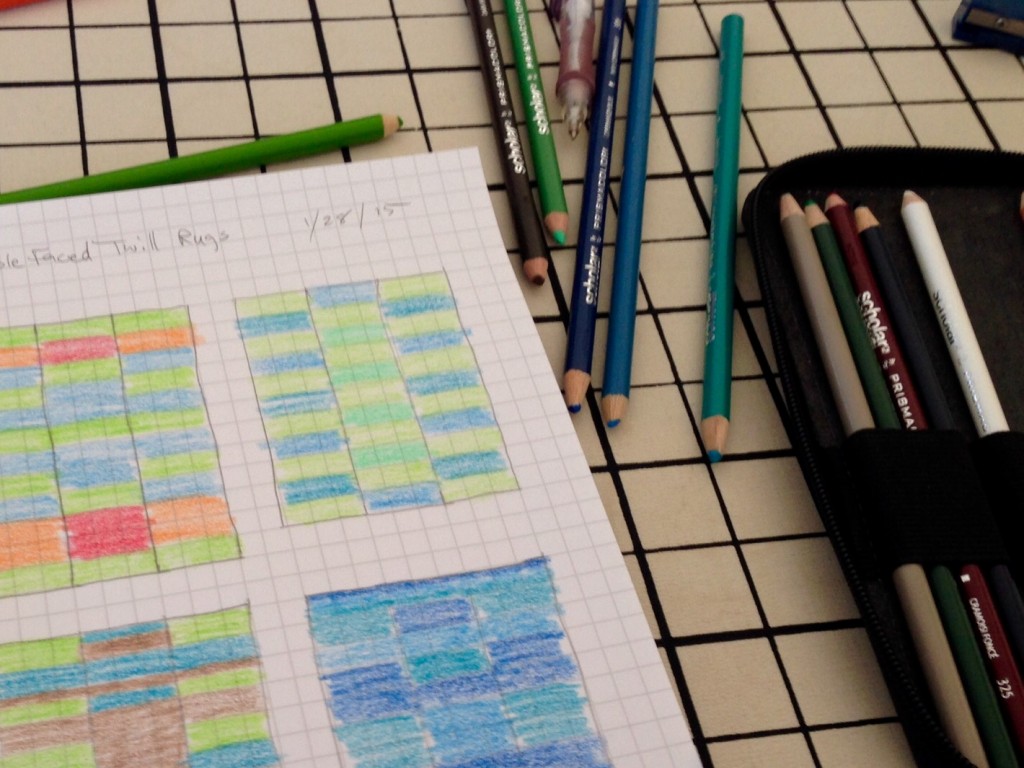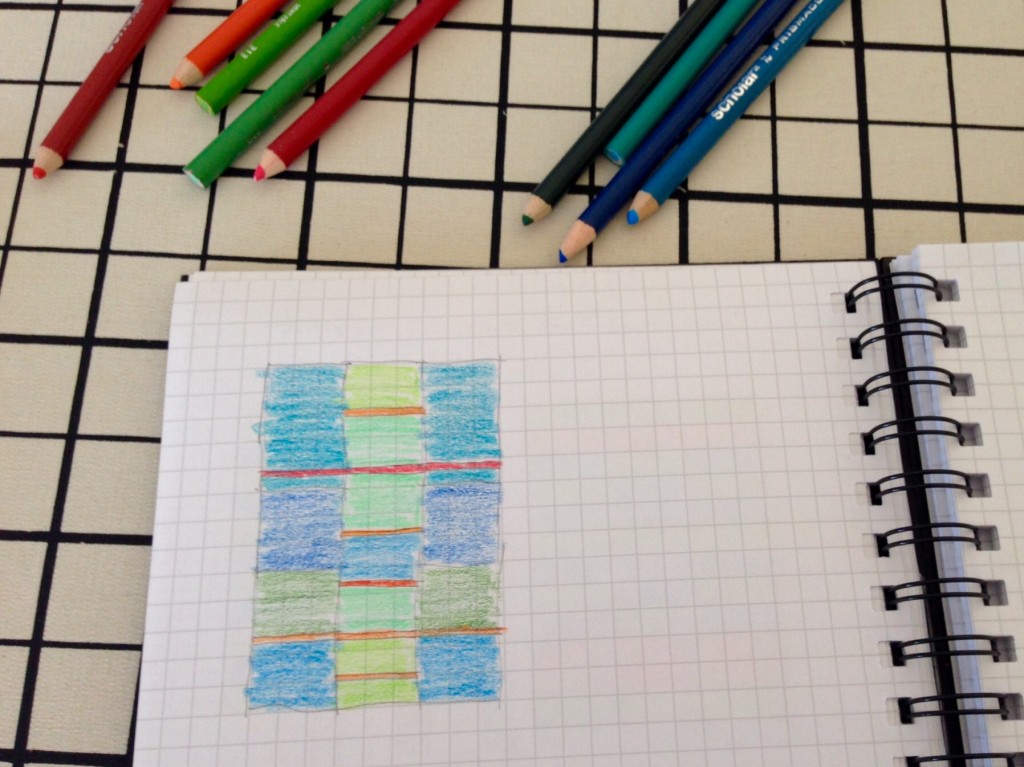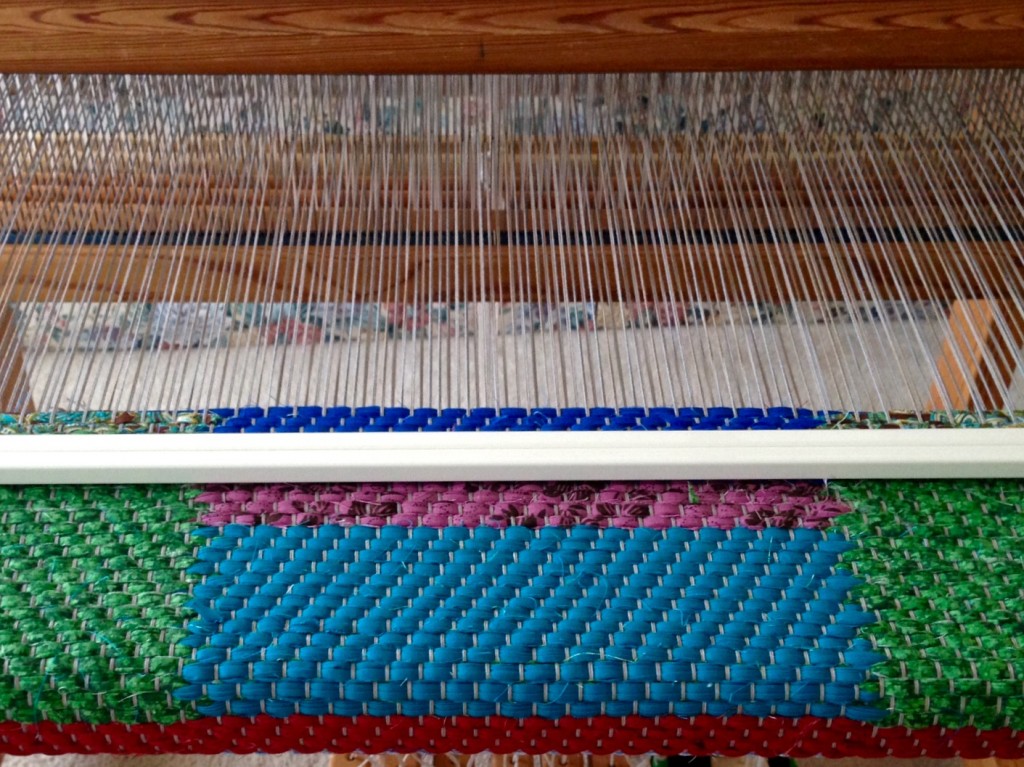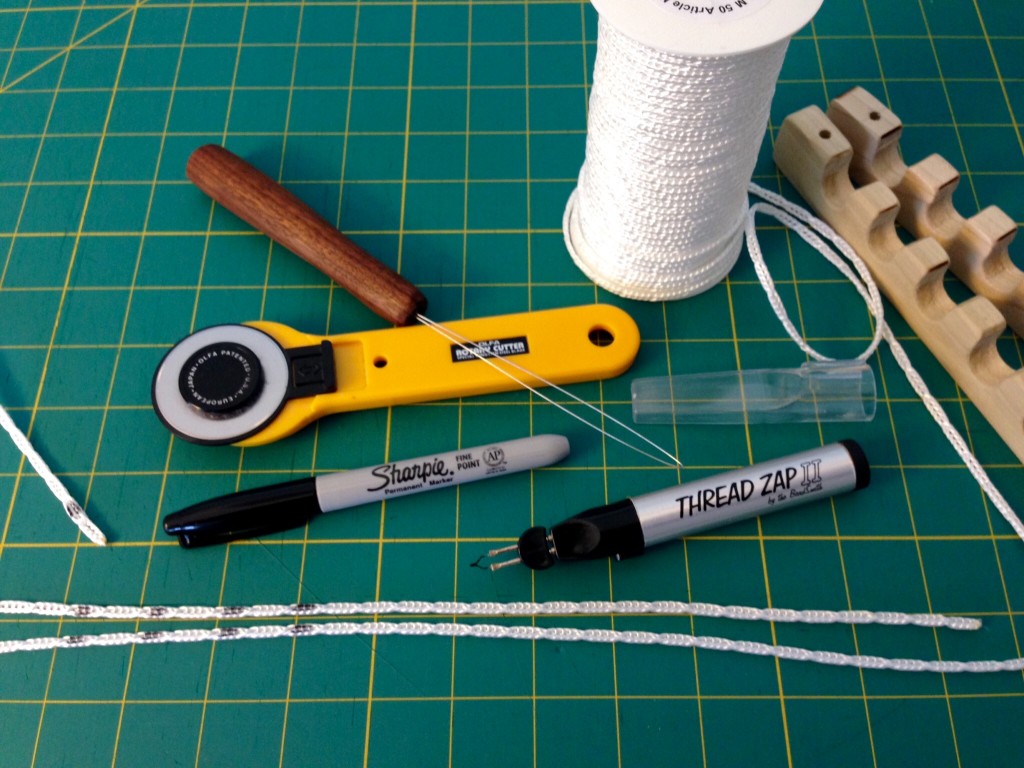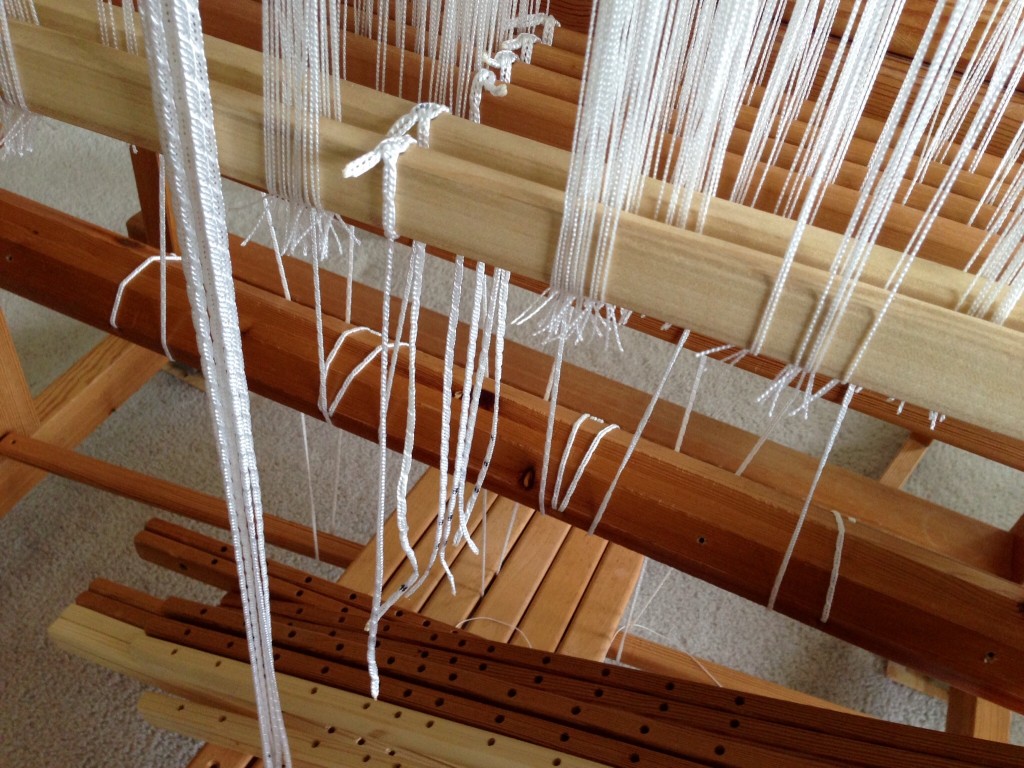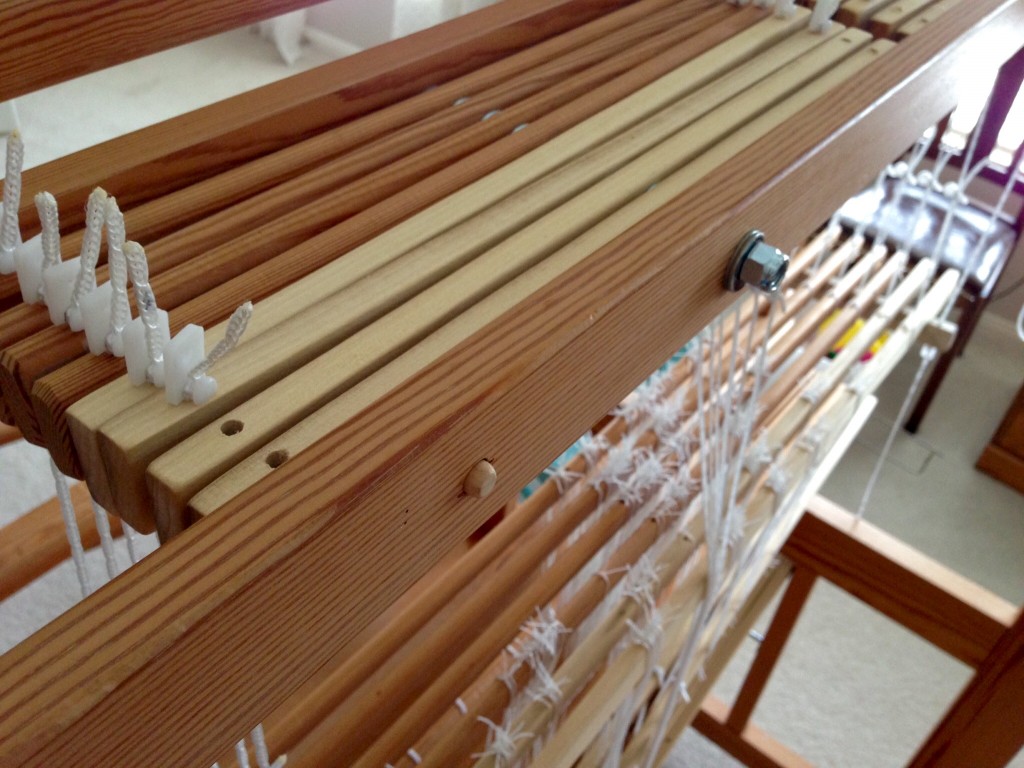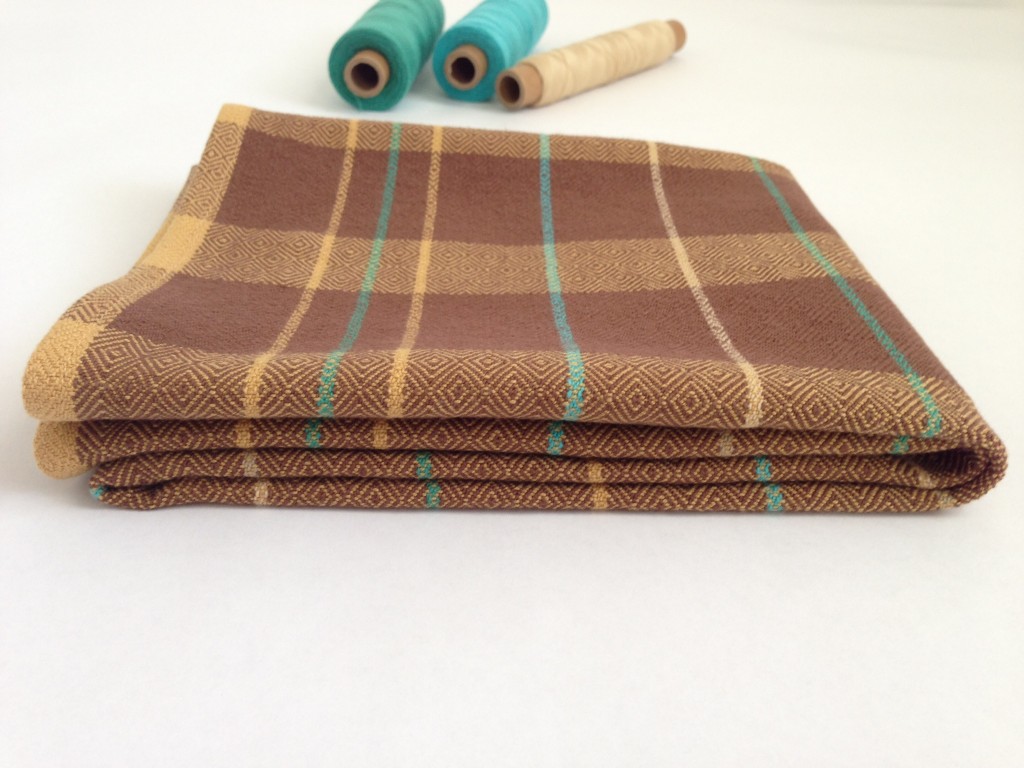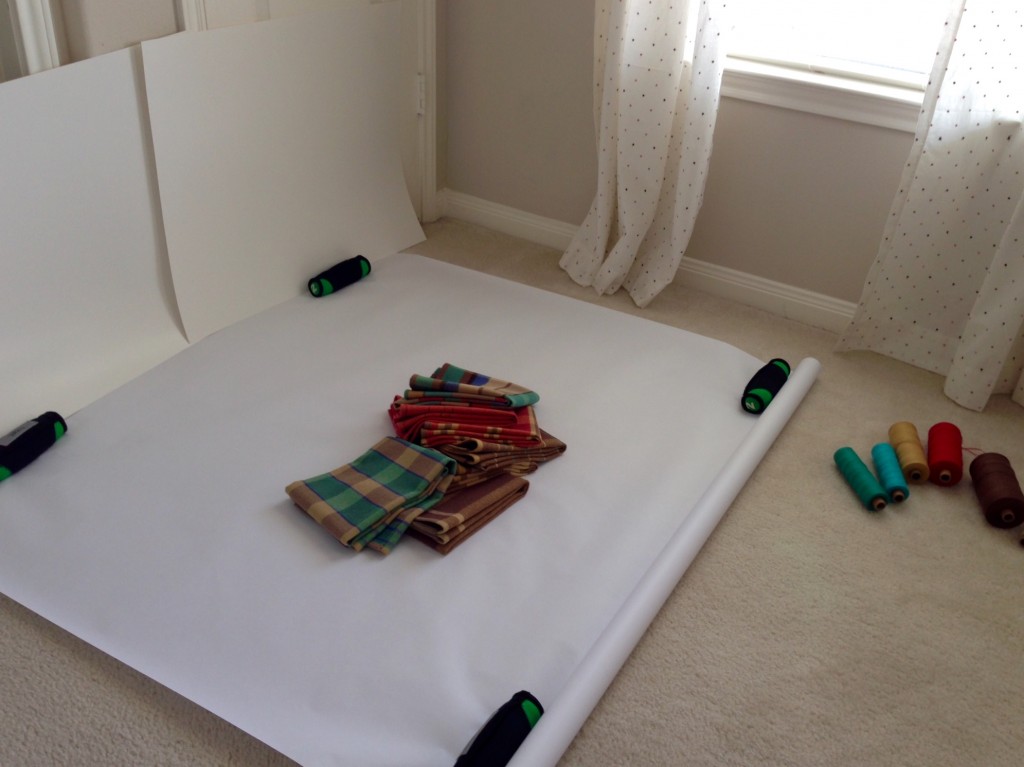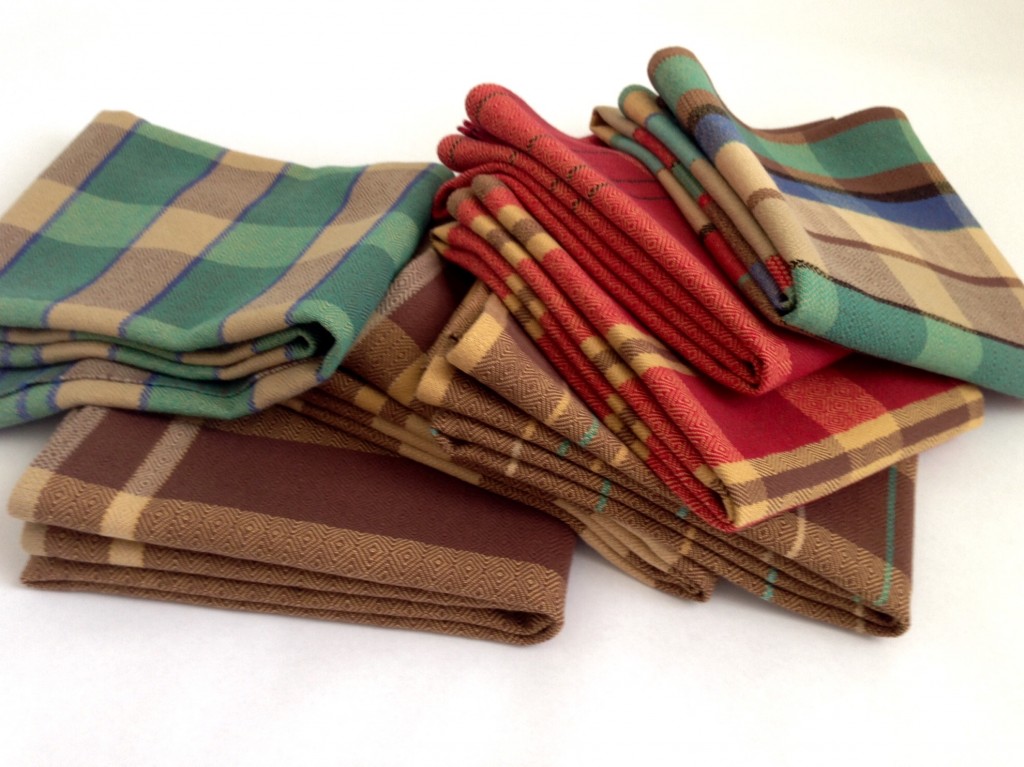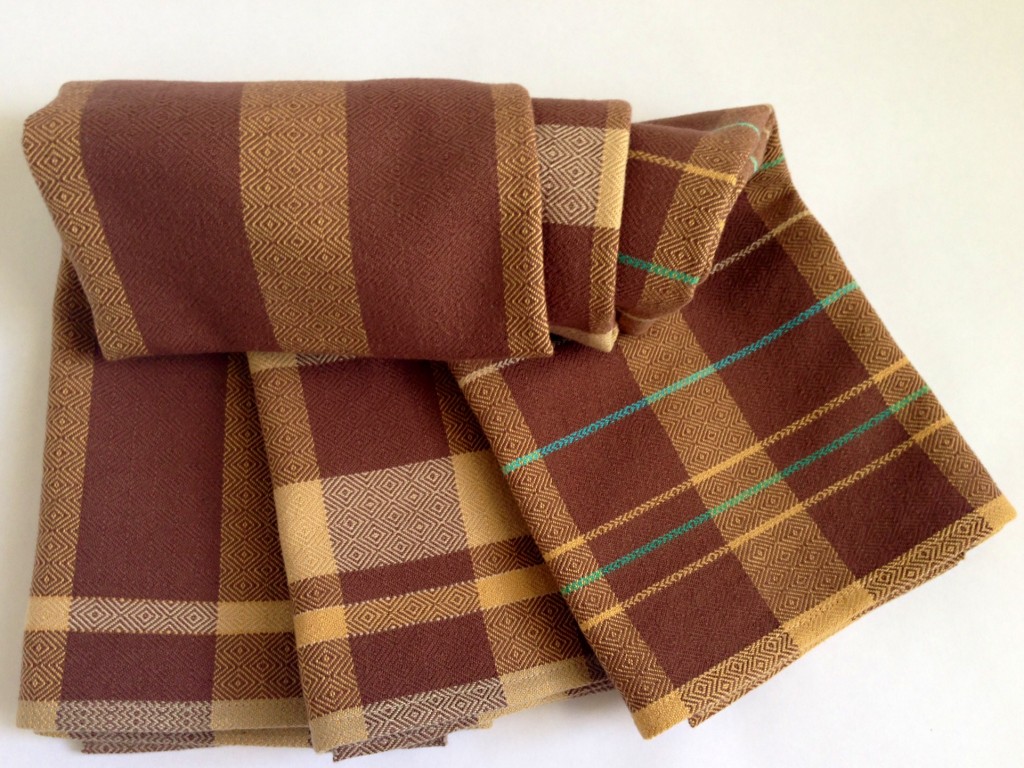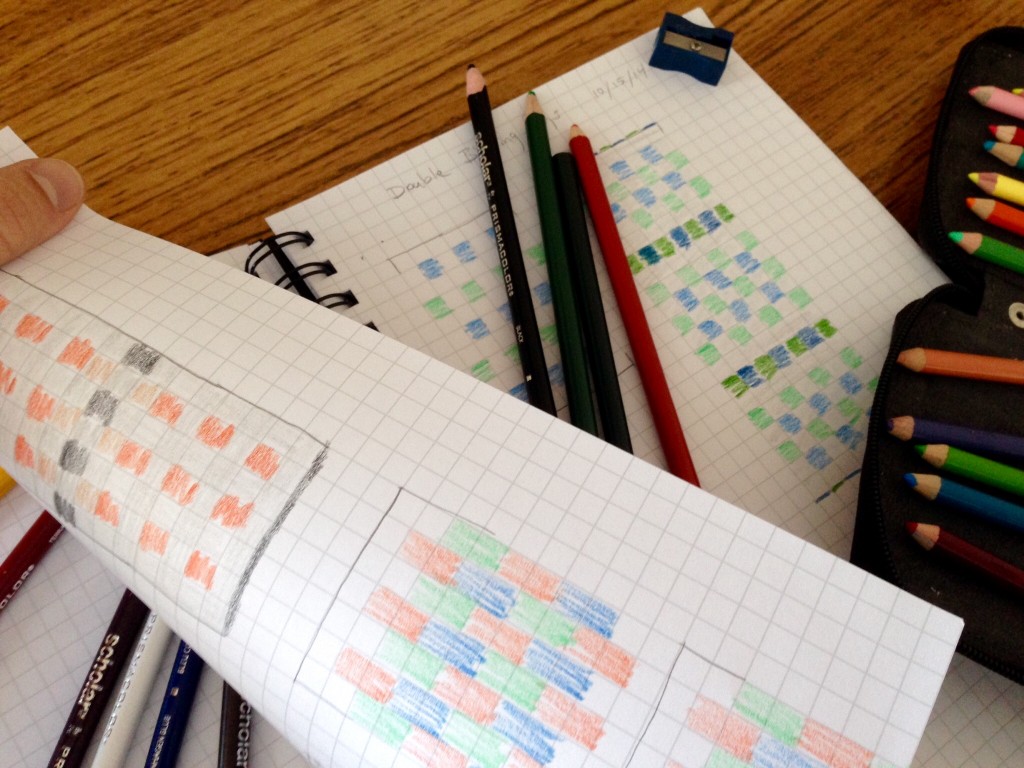Draw-in happens. It is a natural part of weaving. Sending a weft thread across the warp, weaving over and under, naturally pulls the warp threads closer together–this is draw-in. But excessive draw-in ruins selvedges, causes warp ends to fray and/or break, and wastes time because it creates problems. The width across the fell line needs to be the same as the width of the warp in the reed. If the cloth is narrower at the fell line, there is abrasion on the outer warp ends from the reed, as the beater comes to the cloth.
Two things work together to help prevent excessive draw-in:
1) Angling the weft. Placing the weft across the warp at an angle adds extra length to the weft, which helps to accommodate for the natural draw-in.
2) Using a temple (stretcher). The purpose of a temple is to maintain consistency in the width of the cloth. It does this by “stretching” the cloth out, holding it in place with little spikes on each end of the tool. Moving the temple frequently uses the tool to its best advantage. I move mine about every inch of weaving. For more instruction on how to set a temple, please see one of my most popular posts, Tools Day: Temple Technique.
I weave with a temple more often than not. The temple must be set properly, to the precise width, so I have several sizes in my growing collection of temples. Sometimes it works to combine two different sizes to get the measurement that is needed.
My first temple was a make-do tool that I used with my rigid heddle loom on lightweight weaving. It is not adjustable, so it only works with one specific warp width.

My wooden temples are from Glimåkra. They serve me well, and are the ones I use most often. Since they are adjustable, they cover a wide range of possible widths.
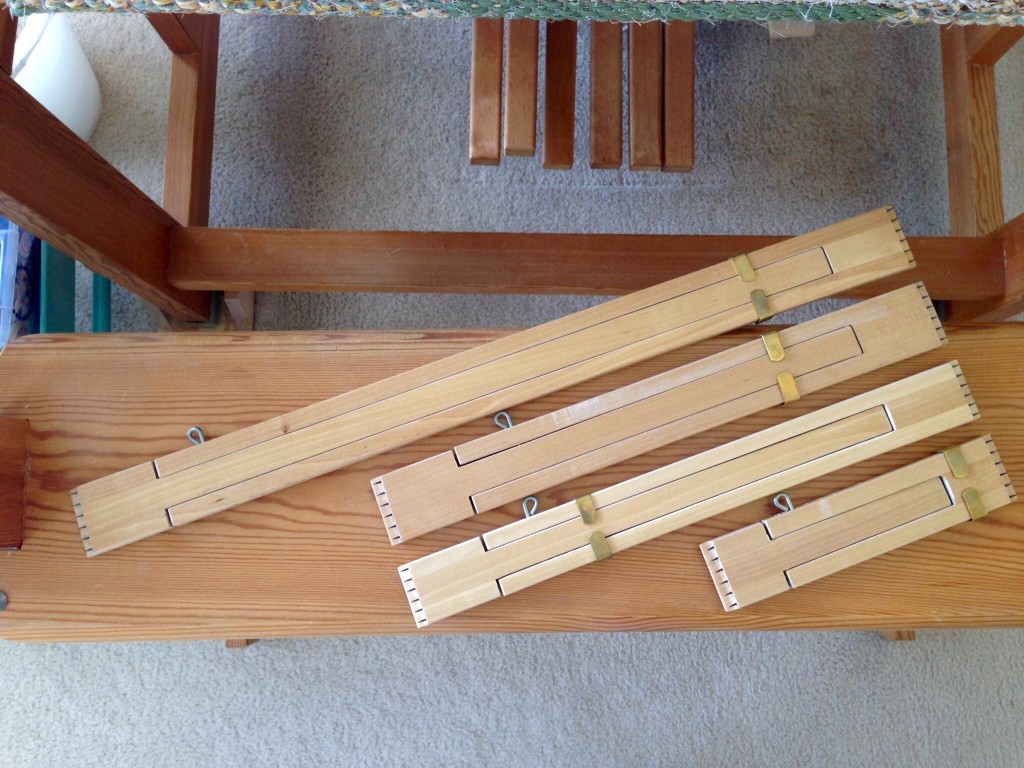
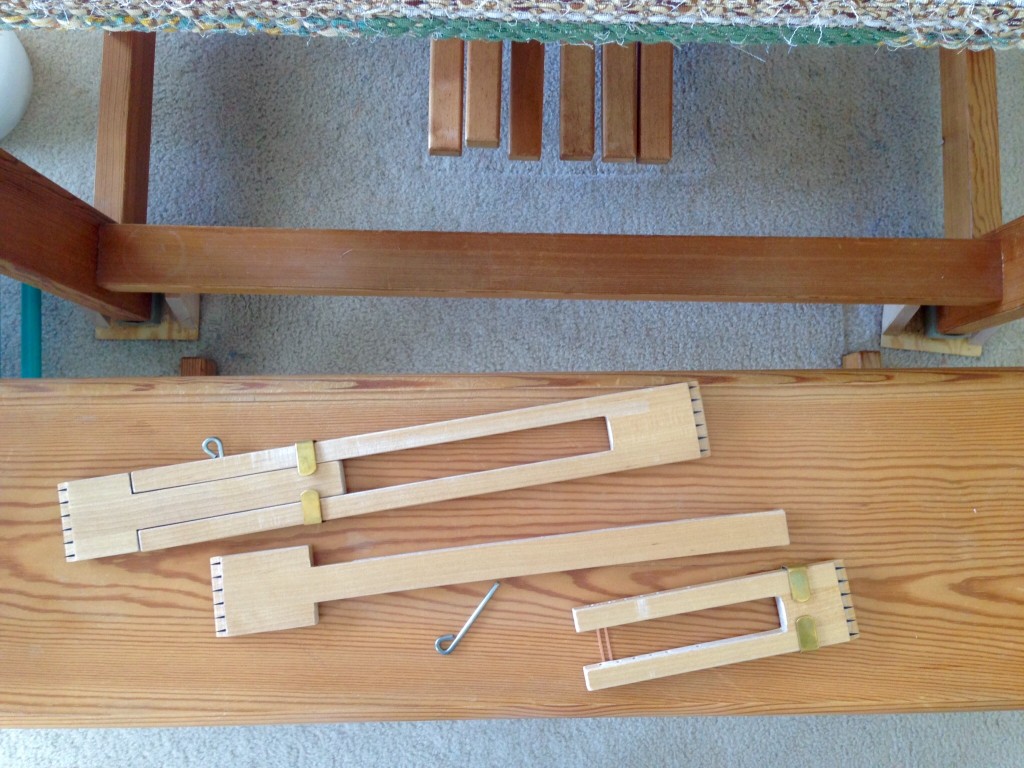
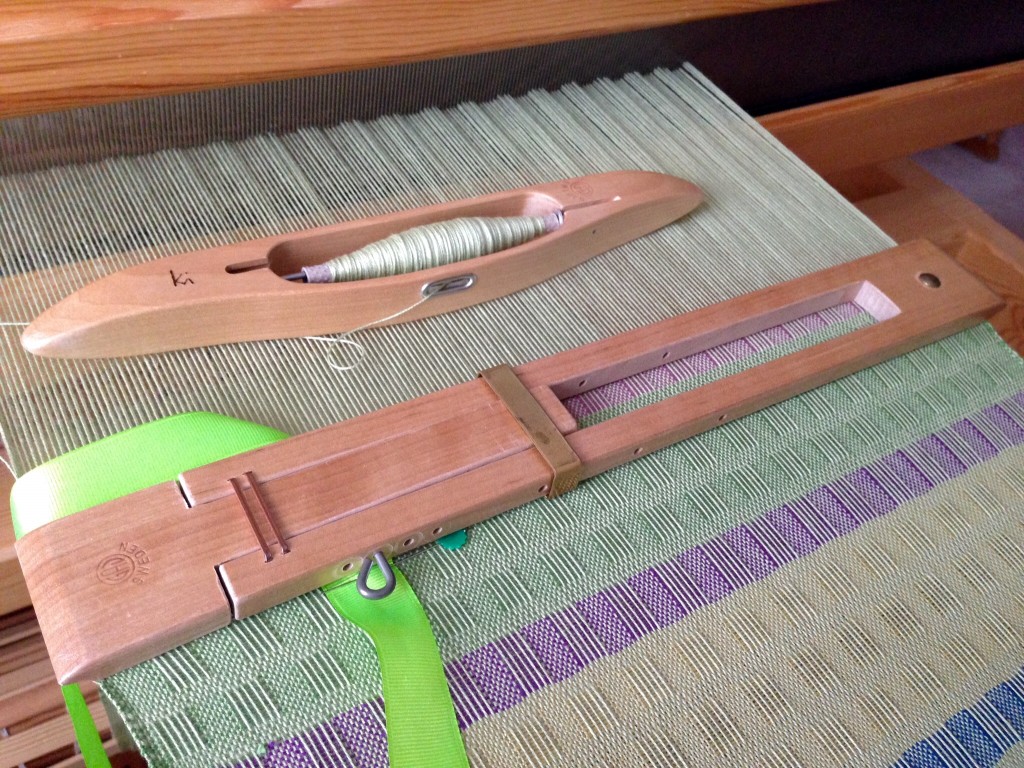
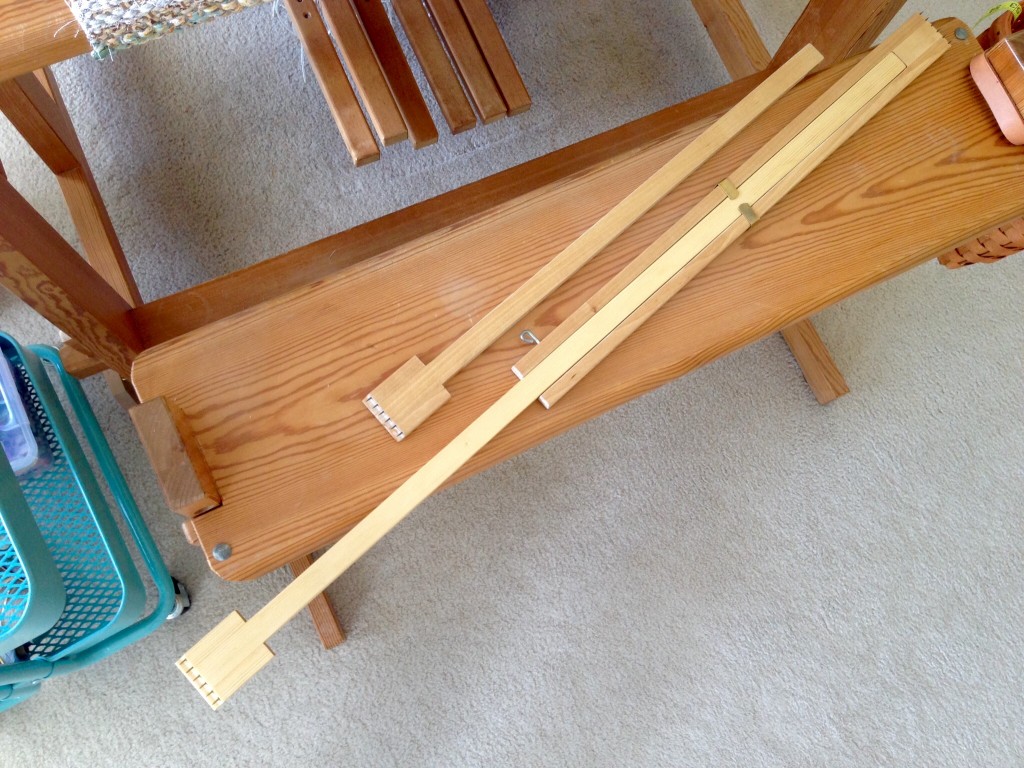
The metal temples are heavier, with thicker teeth, and work well for coarser weaving, especially rugs.
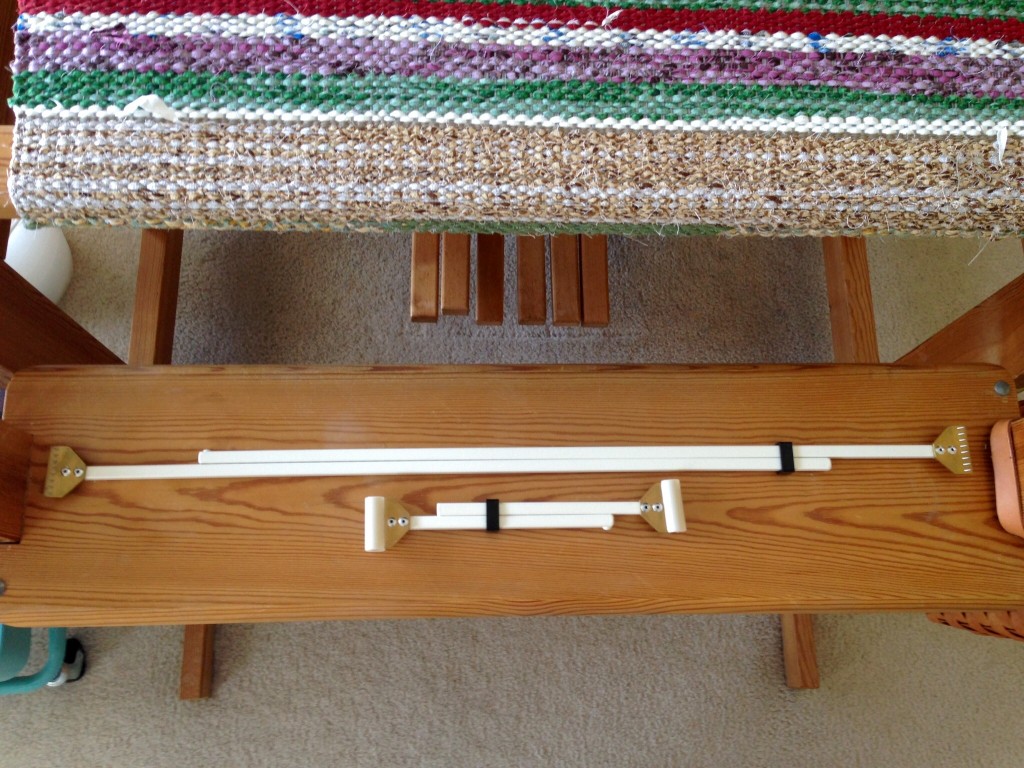
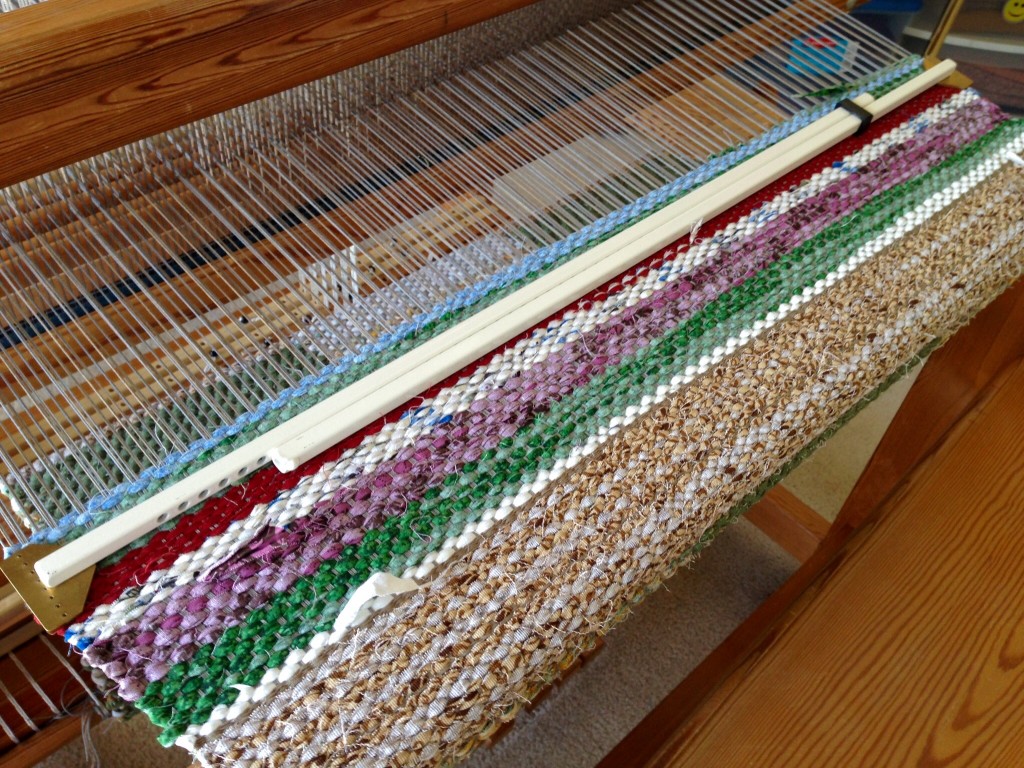
May your selvedges shine, and your broken ends be few.
Happy Weaving,
Karen

